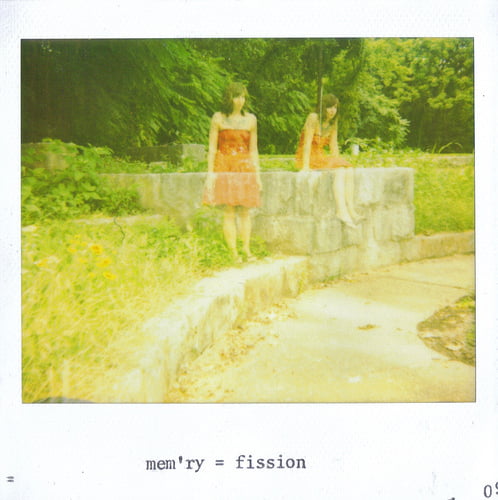The instant camera is a type of camera that generates a developed film image. The most popular types to use self-developing film were formerly made by Polaroid Corporation.
The invention of modern instant cameras is generally credited to American scientist Edwin Land, who unveiled the first commercial instant camera, the Land Camera, in 1948, a year after unveiling instant film in New York City. The earliest instant camera, which consisted of a camera and portable darkroom in a single compartment, was invented in 1923 by Samuel Shlafrock.
In February 2008, Polaroid announced it would discontinue production of film, shut down three factories and lay off 450 workers. Sales of chemical film by all makers have dropped by at least 25% per year in the first decade of the 21st century, and the decline is likely to accelerate. Fujifilm is now the only remaining supplier of instant film in the United States. However, in October 2009, Polaroid announced it would bring back its classic instant film cameras, after announcing the year before that production was to be stopped.
–Wikipedia
Since the era of digital photography becoming mainstream, the use of traditional film and instant cameras has become less common. With few exceptions, it seems that most photographers are turning to digital cameras, computers, and electronic printers; everything that was commonly found in a darkroom has now been replaced with digital equipment. Although digital equipment has many advantages such as lower cost, higher productivity (batch processing, automation, etc.), and ease of use, old-school film and instant formats still remain popular among some photographers.
A friend of mine on Flickr named Ashley Burress, is one of the few photographers who refuse to succumb to the all-digital fad, and who is still an instant print enthusiast. She gave me permission to use her Polaroid photographs as part of my article in exchange for a link to her blog and mention of her Flickr photostream. Most recently, Ash has posted a collection of instant photographs from a recent trip to The Nashville Zoo, which are a must see. All of the photographs presented here are Copyright Ashley Burress, and used with permission.
Instant format has its own signature quirks and attributes. Because of its instant results, it was popular in the days before digital photography became mainstream. It remained quite popular during the early days of digital photography before LCD screens were added to digital cameras which showed the exposures that were taken with the camera. As the article on Wikipedia states, production of instant film almost stopped forever. Had it not been for the small percentage of enthusiasts who still demanded the film still be in production, the world might never have seen instant film ever again.
The advantages of instant print film are that due to its almost instant process, there is only a momentary wait between the time the exposure was taken and the print coming into being. One of the greatest misconceptions of instant film is the shaking of the print people always seem to do after the shot is taken. There is really no need to shake the print, and doing so actually degrades the quality. It’s best to leave the print on a flat, horizontal surface for a short period of time to allow the chemicals to work their magic. On the other hand, if a grunge style is your aim, you can bend and/or place objects on top of the print surface immediately after taking the shot to alter the chemical reaction that takes place that develops the print, literally right before your eyes.
Anyone who was around during the peak of the Polaroid craze will tell you that the most amazing part of the process is watching the print develop on its own. I can’t explain the process by which the print develops, as it is immensely complicated, and covered by numerous patents, but it starts out with the print being ejected from the camera, where it starts out grayish in color, and the color develops slowly, starting with shadows.
Polaroid prints tend to have exposure and saturation that is a little janky, because there is no real way of setting exposure exactly. Some of the digital-instant camera hybrids will allow you to adjust exposure to a certain degree, but unlike modern digital photography, it’s far from perfect. Focus is also somewhat fixed much like that of a holga camera or a really cheap point-and-shoot film camera.
The biggest disadvantage of instant print photography is the cost, and availability. Amazon.com has perhaps the best selection, and [usually] very competitive prices on Polaroid Instant Film. Photography and camera stores usually also carry this type of film, or will be able to tell you of a shop that does. Typically, the average exposure will cost at least $1, sometimes more, depending on the brand and ISO speed. The price varies on a number of factors, including buying in bulk.




polaroid spectra set on Flickr
For those of you who have already made the switch to digital, don’t despair. You can download free software to make digital photos look as if they were taken with a Polaroid camera. Here’s the Poladroid website and the Flickr group to go along with it. Also, Polaroid has made quite the debuit on Flickr with this group.
*The Current Photographer website contains links to our affiliate partners. Purchasing products and services through these links helps support our efforts to bring you the quality information you love and there’s no additional cost to you.
My company specializes in writing, photography, and website design. My father gave me my first camera when I was a small child, and it quickly became my most prized possession. I was also fascinated with exploring places others rarely ever ventured, such as abandoned places, buildings, and railroad cars.
As time went on, I formed a business centered around my passion; living larger-than-life adventures, and sharing the photographic journey on my website.
